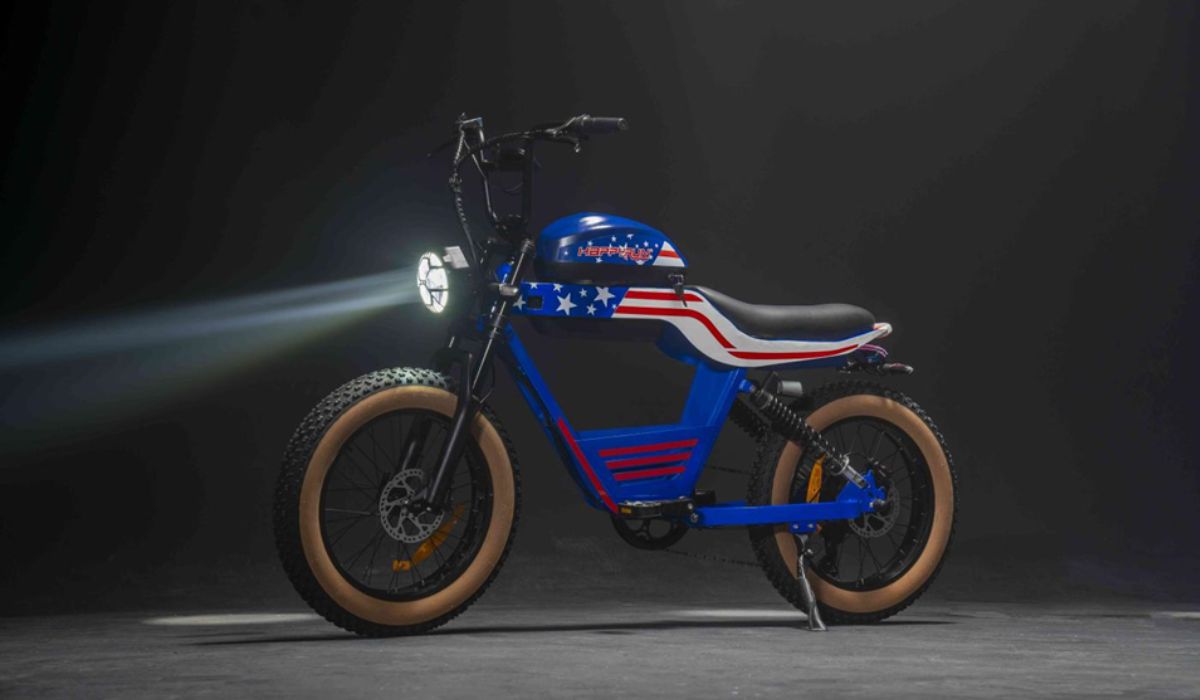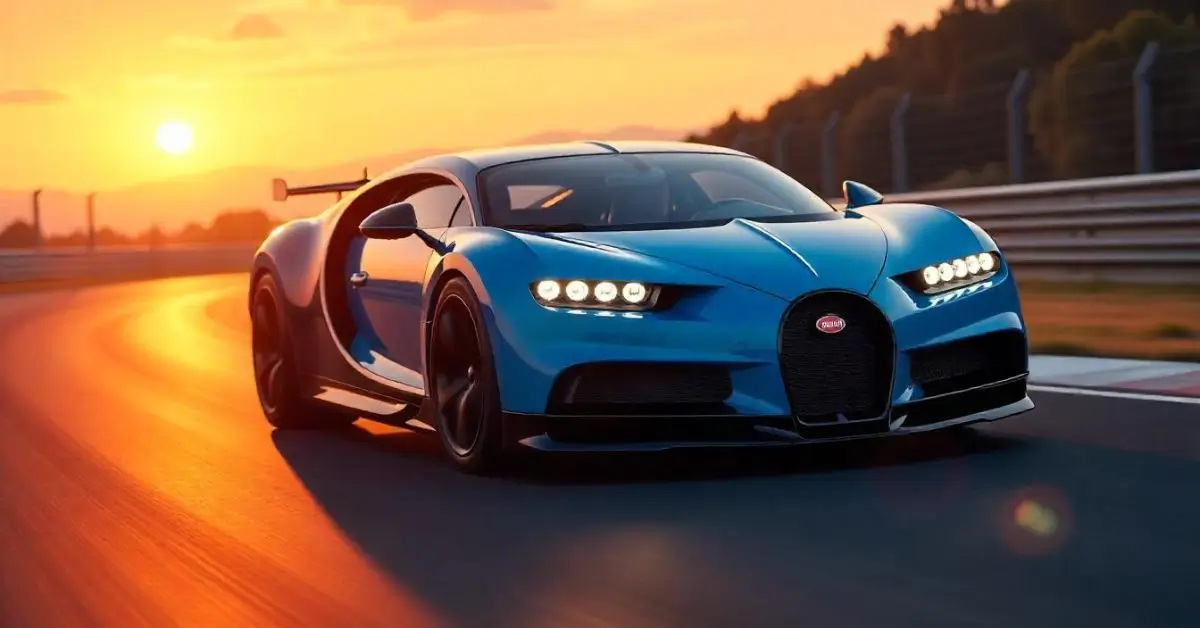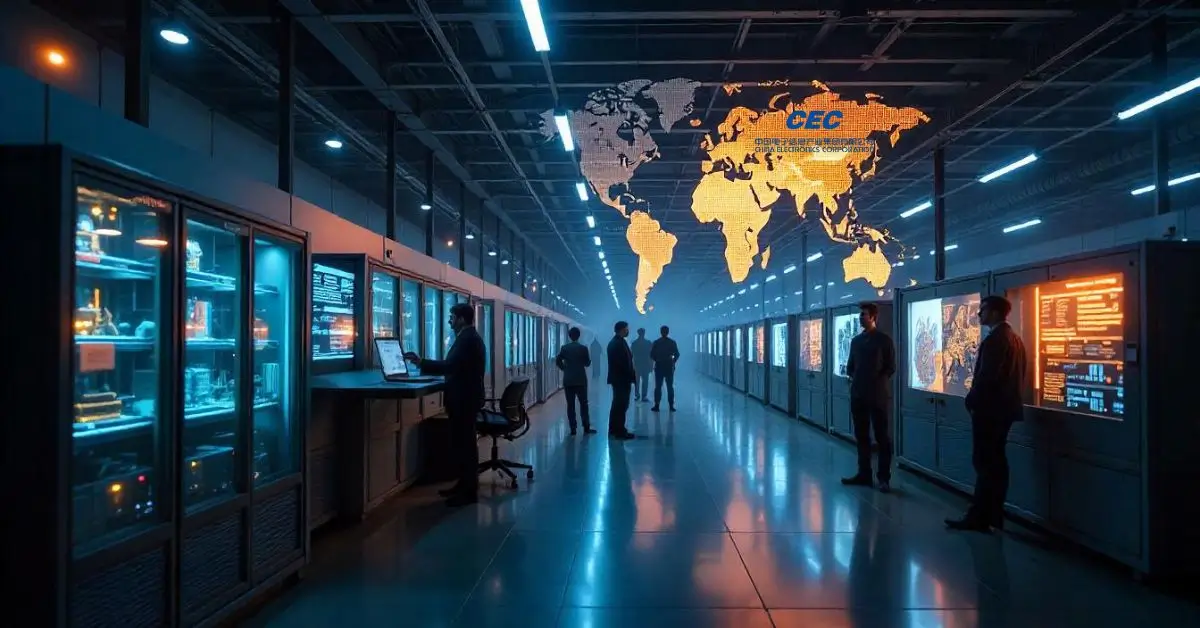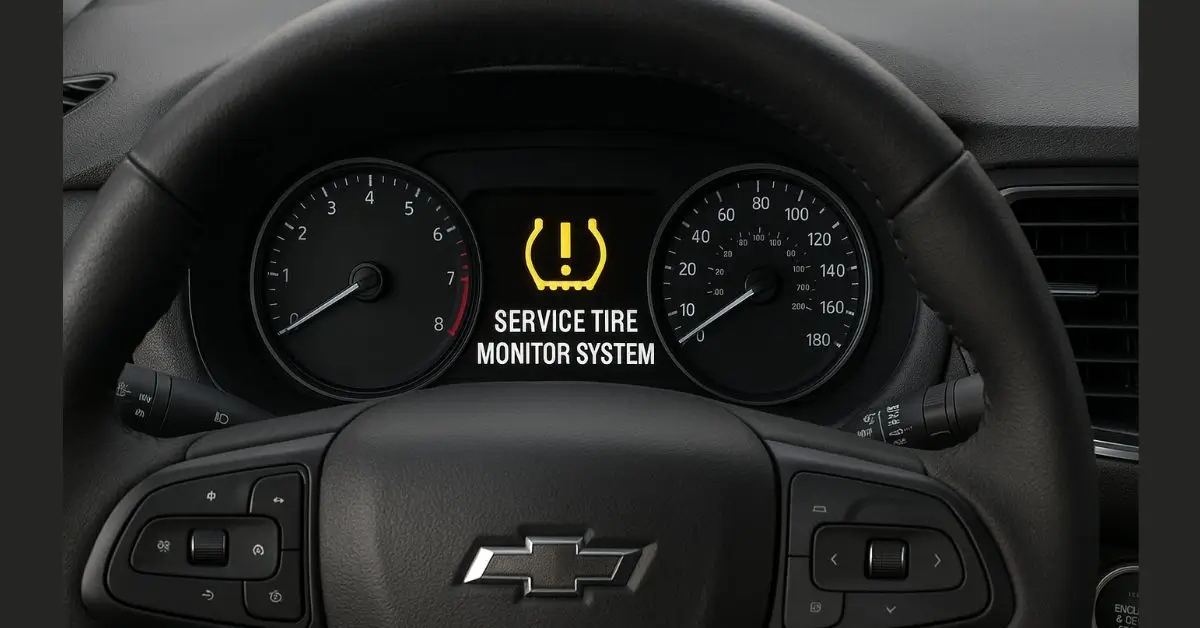TECHNOLOGY
Can You Overcharge an Electric Motorcycle for Adult Battery?

Ebike long range have become well-known because of their quiet running and environmentally friendly character. Still, their batteries need careful management, much like any rechargeable battery-powered gadget. The possibility of overcharging is one typical worry of proprietors.
Understanding Battery Charging
Understanding how these batteries operate will help one to realize the possible risks of overcharging. Most electric motorcycles run on lithium-ion batteries, which have great energy density but also sensitivity to overcharging.
A battery overcharges when it is charged above its capacity. Reduced battery life, poorer performance, and in severe cases even fire concerns might all follow from this.
The Risks of Overcharging your Moped Style E-Bike
Overcharging a moped-style e-bike battery can have several negative consequences:
- Lower Battery Life: Overcharging may cut the battery’s lifetime. Overcharging’s repeated stress can compromise the interior components of the battery, including separators and electrodes. This shortens the battery’s general lifetime and lessens its capacity to retain a charge.
- Performance Issues: Overcharged batteries might not run as well. An overcharge could cause lithium plating on the electrodes of the battery to develop. This plating lessens the effective surface area accessible for charge transfer, therefore impeding the battery’s power output. Furthermore limiting performance are overheated batteries experiencing internal resistance increases.
- Safety Risks: One can consider overcharging a safety risk. During overcharging, too much heat creation can cause internal components of the battery to break down and produce flammable electrolytes to leak. Under extreme circumstances, this might cause a thermal runaway situation whereby the battery creates heat constantly, maybe leading to fire or explosion.
Signs Your Moped Style E Bike Battery is Overcharged

Preventing damage requires an awareness of the indicators of an overcharged battery. Typical indicators are:
● The battery generates heat
After charging, a regular battery should feel just mildly warm to the touch; it should never feel hot. One very good sign of overcharging is excessive heat. The internal components of the battery may be damaged by this heat, therefore posing possible safety concerns.
● The battery expands and becomes bigger than usual
Unlike typical lithium-ion batteries, which are used in e-bikes, these batteries can expand when overcharged or broken. Indicating a problem is if you find that your battery is physically bigger than usual. Swelling raises the possibility of fire or explosion and causes interior damage.
● You can smell something bad
A chemical or burning smell coming from your battery is a serious warning sign. It indicates that the battery is experiencing internal problems, likely due to overcharging. Never ignore a strange smell coming from your battery.
● It takes a long time to charge
If your e-bike battery is taking significantly longer to charge than usual, it could be a sign of overcharging. Overcharging can cause the battery’s charging efficiency to decrease, resulting in longer charging times.
● Your e-bike doesn’t go as far
A reduced range on a full charge is another indicator of potential battery issues, including overcharging. Overcharging can degrade the battery’s capacity, meaning it can hold less energy, resulting in shorter distances traveled on a single charge.
If you notice any of these signs, immediately stop charging your battery and consult your e-bike’s user manual or contact the manufacturer for further guidance.
How to Take Care of Your Ebike Long Range Battery?

To make your e-bike battery last as long as possible, follow these tips:
Use the right charger
Always use the charger that comes with your e-bike. Using a different charger can damage your battery.
Don’t overcharge
Once your e-bike is fully charged, unplug it. Leaving it plugged in for too long can harm the battery.
Watch while it charges
As your e-bike charges, keep a watch on it. As soon as something seems or smells off, disconnect it.
Store it right
Charge the battery of your e-bike to around half full if you won’t be using it for an extended period of time. After that, keep it somewhere dry and cool.
How Can You Avoid Overcharging the Battery on Your E-Bike?
Use the Correct Charger
It is highly detrimental to your battery’s health to charge it with an incompatible charger. But the circumstance is like to attempting to fit a square peg into a round hole. The original charger that was included with your e-bike is suitable for your bike’s battery. It can cause problems to have to utilise a separate one in order to accomplish that.
Avoid Overcharging
Finally, after charging your moped style ebike battery to the maximum, detach it. Charging it for too long damages the battery even when the device is plugged in to charge. It is actually as if one leaves a glass of water full to the level, any addition of water will overflow.
Monitor Charging
Always monitor the battery charge when you are charging the battery. This way, it is possible to remove it once it is full preventing wastage. It is also self-explanatory like watching a pot of water boil, one does not want to end up with a dry pot.
Store Properly
If you’re storing your e-bike for a long time, charge the battery to about half full before storing it. An empty or full battery can be bad for it. Also, keep the battery in a cool, dry place. Think of it like putting your favorite sweater in a drawer instead of leaving it out in the sun.
Manufacturer Guidelines
The best information a user can get about the batteries and the charging process can be obtained from the makers of electric bikes. The exact procedure and duration should be outlined in the owner’s manual of the moped-style ebike.
The Happyrun Tank G100: Ebike Long Range Powerhouse
This is an electric motorcycle that is designed for performance to satisfy the adrenaline rush of the consumer while at the same time being an environmentally friendly machine. This bike is equipped with a very powerful motor, a vast range, as well as a rather sturdy construction – all factors that make it shine among the other electrics.
Although it has a huge capacity of 38ah lithium battery, it has a dual battery system, and this makes it cover a range of up to 85+ miles in pedal assistance mode and 70 miles in full electric mode. This is where you can embark longer journey without figuring out if it will deplete the battery power. Peak Motor Power:2000W,Rated Motor Power:1000W, the acceleration and power of the bike are exceptional making it possible to overcome all types of tracks.
Some of the primary guidelines followed in the design of the G100 are safe and comfortable. Smart design and futuristic structure contribute to a lesser wind drag and noise factor as well and having a larger frame enhances flexibility as well as reduces vibration such that even when the terrain is tough, the Full Suspension System will also ensure the bike remains as comfortable as possible. NFC unlock system as a feature of the car’s security system enhances its convenience of it.
All in all, if you need the power, range, look, and feel of an electric motorcycle that’s stylish, affordable, and packing a good amount of punch the Happyrun Tank G100 will interest you. Discover the fun of electric riding while not losing any power or comfort at cheap price.
TECHNOLOGY
Bugatti Bolide Price: Breakdown of This Hypercar Marvel

The Bugatti Bolide price has become a hot topic in the world of hypercars. This extraordinary machine pushes the boundaries of speed, design, and technology like no other. In this comprehensive article, we’ll dive deep into everything you need to know about the Bugatti Bolide price, its unique features, and how it compares to other hypercars on the market. From cost to performance metrics, we’ll explore what makes this vehicle a masterpiece worth every penny.
Understanding the Bugatti Bolide Price and What It Includes
The Bugatti Bolide price reflects the exceptional craftsmanship and engineering that goes into producing this ultra-lightweight, track-focused hypercar. Starting at a staggering $4.7 million, the Bolide is more than just a car; it’s a symbol of automotive innovation.
This price includes the bespoke engineering, cutting-edge aerodynamics, and a powerhouse 8.0-liter quad-turbocharged W16 engine delivering an astronomical 1,850 horsepower. But the cost also reflects Bugatti’s exclusive approach — every Bolide is custom-built with attention to detail that few manufacturers can match.
Why the Bugatti Bolide Price is Justified
Unmatched Performance and Engineering
The Bolide is designed to be the lightest Bugatti ever made, weighing only around 1,240 kilograms (about 2,733 pounds). This incredible weight reduction combined with the 1,850 hp engine translates into mind-blowing speed and agility on the track.
- Top Speed: Estimated to exceed 310 mph.
- 0-60 mph: In under 2.2 seconds.
- Aerodynamics: Enhanced to generate up to 1,800 kg of downforce.
Industry experts praise the Bolide for its aerodynamic mastery and raw power, justifying its premium pricing in the elite hypercar segment.
“Bugatti has engineered the Bolide as a pure track weapon, pushing the envelope in every aspect of automotive design,” says automotive engineer Dr. Markus Weidner.
Exclusivity and Limited Production
The Bugatti Bolide is not mass-produced. Only 40 units are planned for production worldwide, making the Bolide extremely rare. This exclusivity factor significantly impacts the Bugatti Bolide price.
Owners get a car that’s almost like a piece of rolling art, and the value is expected to appreciate over time, especially given Bugatti’s legacy and the hypercar’s pioneering technology.
Detailed Comparison: Bugatti Bolide Price vs Other Hypercars
| Feature | Bugatti Bolide | Ferrari SF90 Stradale | McLaren Speedtail | Koenigsegg Jesko | Porsche 918 Spyder |
|---|---|---|---|---|---|
| Starting Price | $4.7 million | $625,000 | $2.25 million | $3 million | $845,000 |
| Horsepower | 1,850 hp | 986 hp | 1,035 hp | 1,600 hp | 887 hp |
| Weight (kg) | 1,240 kg | 1,570 kg | 1,430 kg | 1,410 kg | 1,640 kg |
| 0-60 mph | ~2.2 seconds | 2.5 seconds | 2.9 seconds | 2.5 seconds | 2.2 seconds |
| Top Speed (mph) | 310+ mph | 211 mph | 250 mph | 300 mph | 214 mph |
| Aerodynamics & Downforce | Up to 1,800 kg downforce | Advanced active aero | Streamlined for top speed | Active aero system | Active aero system |
This comparison highlights why the Bugatti Bolide price sits at the pinnacle of the hypercar market. While competitors offer impressive performance, the Bolide’s combination of horsepower, weight, and aerodynamic engineering sets a new benchmark.
The Technology Behind the Bugatti Bolide Price
Aerodynamics and Materials
Bugatti’s use of advanced materials like carbon fiber and titanium contributes to the Bolide’s astonishing lightweight design. The car’s aerodynamic elements are designed using cutting-edge simulation software, ensuring maximum downforce and minimal drag.
Engine and Powertrain
At the heart of the Bolide is Bugatti’s legendary 8.0-liter W16 engine, significantly tuned to deliver the 1,850 hp mark. This power output is unprecedented and contributes heavily to the vehicle’s pricing due to the engineering and precision manufacturing involved.
The Buying Experience and What to Expect
Acquiring a Bugatti Bolide is more than a transaction — it’s an entry into a unique club of hypercar owners. Prospective buyers must go through a thorough selection process, including customization options to tailor the car to personal tastes.
The Bugatti Bolide price also includes:
- Personal consultations with Bugatti engineers and designers.
- Access to exclusive driving events and experiences.
- Comprehensive service and maintenance packages.
Bugatti Bolide Price: A Worthwhile Investment?
Given its extreme performance and rarity, the Bolide is considered an appreciating asset by many collectors. Hypercar values like this often increase over time, especially limited-run models with groundbreaking technology.
- Collector’s value: High, due to rarity and technological innovation.
- Performance advantage: Exceptional even among other super-limited hypercars.
- Brand prestige: Bugatti’s unmatched reputation for luxury and engineering.
Bugatti Bolide Price and Maintenance Costs
Maintenance for a car like the Bolide reflects its exclusive nature. While Bugatti offers comprehensive care packages, owners should expect:
- High costs for bespoke parts and labor.
- Specialized servicing requirements.
- Track-focused wear and tear due to extreme performance.
The Bugatti Bolide price is just the starting point; ownership involves significant ongoing investment, but with unmatched service quality.
How Does the Bugatti Bolide Price Compare to Other Hypercar Investments?
| Investment Aspect | Bugatti Bolide | Other Hypercars (Average) |
|---|---|---|
| Initial Purchase Cost | $4.7 million | $1 million – $3 million |
| Annual Maintenance | $150,000+ | $30,000 – $70,000 |
| Depreciation | Minimal (likely appreciation) | Moderate to high |
| Resale Value | Expected to increase | Variable |
| Insurance Premium | Very high | High |
This table further explains why the Bugatti Bolide price is a reflection of more than just the car itself—it represents an entire ecosystem of luxury, service, and exclusivity.
Environmental Considerations and Efficiency
While the Bolide prioritizes performance over environmental impact, Bugatti is increasingly mindful of sustainability. The Bolide is designed to optimize power-to-weight ratio efficiently, but given its massive horsepower, fuel consumption is understandably high.
Industry standards for hypercars typically accept these trade-offs in favor of ultimate performance. Bugatti’s future plans include hybrid and electric innovations, but the Bolide remains a raw, combustion-engine masterpiece.
Summary of the Bugatti Bolide Price
The Bugatti Bolide price might seem astronomical, but when viewed through the lens of cutting-edge technology, exclusivity, and peerless performance, it stands justified. This hypercar is not just about speed but represents the pinnacle of automotive engineering and luxury.
Conclusion:
The Bugatti Bolide price sets it apart in the elite hypercar market, combining unmatched power, ultra-lightweight construction, and exquisite craftsmanship. For enthusiasts and collectors, this car is an investment in automotive history and a thrilling machine designed to dominate the track.
If you want to experience the cutting edge of hypercar technology, the Bugatti Bolide is a masterpiece worth every dollar of its remarkable price.
FAQ’s
What is the exact Bugatti Bolide price?
The Bugatti Bolide price starts at approximately $4.7 million, reflecting its exclusive design and unmatched performance.
How many Bugatti Bolide cars will be produced?
Only 40 units of the Bugatti Bolide are planned for production, making it an extremely rare hypercar.
What kind of engine powers the Bugatti Bolide?
It is powered by an 8.0-liter quad-turbocharged W16 engine delivering around 1,850 horsepower.
How fast can the Bugatti Bolide go?
The Bolide is estimated to reach speeds of over 310 mph, with a 0-60 mph time of around 2.2 seconds.
Is the Bugatti Bolide price worth the maintenance cost?
While maintenance is expensive, the comprehensive care and exclusivity offered by Bugatti make it a valuable investment.
How does the Bugatti Bolide compare to other hypercars?
It stands out due to its extreme lightweight design, higher horsepower, and superior aerodynamics, justifying its premium price.
TECHNOLOGY
China Electronics Corporation: Innovation in the Global Tech

China Electronics Corporation stands at the forefront of technological advancement, symbolizing China’s rapid progress in the electronics sector. This state-owned giant has evolved into a powerhouse, influencing various industries ranging from telecommunications to defense electronics. As global markets become increasingly competitive, understanding the strengths, operations, and innovations of China Electronics Corporation is vital for industry professionals and tech enthusiasts alike.
Introduction to China Electronics Corporation
China Electronics Corporation (CEC) is one of the largest electronic technology conglomerates in China. Founded with the mission to spearhead the development of electronic information technologies, the corporation has grown through strategic investments and innovation-led growth. The company’s scope covers research and development, manufacturing, and distribution of a wide array of electronic products and systems.
From advanced semiconductor components to communication infrastructure, CEC’s influence spans multiple layers of technology and business. The company is pivotal in supporting China’s national security goals and commercial ambitions in the tech arena.
The Strategic Role of China Electronics Corporation in China’s Tech Ecosystem
CEC’s significance extends beyond manufacturing; it plays a strategic role in China’s broader technological and economic policy frameworks. The corporation acts as an innovation hub, integrating cutting-edge research with industrial applications, which boosts China’s competitive edge globally.
The corporation is often recognized for its focus on:
- Innovation in semiconductor technologies
- Development of 5G and telecommunications systems
- Cybersecurity solutions
- Defense electronics and advanced military systems
This multi-sector involvement ensures China Electronics Corporation remains a cornerstone in both civilian and defense electronics markets.
Core Business Segments of China Electronics Corporation
1. Semiconductor Industry
Semiconductors are the backbone of modern electronics. China Electronics Corporation has made substantial investments in semiconductor fabrication, design, and packaging technologies. It aims to reduce reliance on foreign semiconductor supplies and boost domestic production capacity.
2. Telecommunications and Network Equipment
CEC is a key player in the telecommunications sector, contributing to the development and deployment of 5G networks, optical fiber technologies, and broadband infrastructure. Their products serve both commercial telecom operators and government projects.
3. Defense Electronics
As part of China’s national defense industrial complex, CEC produces advanced radar systems, electronic warfare equipment, and command-control systems. These products comply with rigorous industry standards and showcase China’s advancements in military electronics.
4. Information Technology Services
CEC extends its portfolio to include software development, cybersecurity solutions, and IT infrastructure services. This segment supports both public institutions and private enterprises, enhancing digital transformation efforts across China.
Innovation and Research at China Electronics Corporation
China Electronics Corporation places heavy emphasis on research and development (R&D). The company operates numerous R&D centers and laboratories focused on emerging technologies such as artificial intelligence (AI), Internet of Things (IoT), and quantum computing.
A CEC senior executive once stated:
“Our commitment to innovation drives us to pioneer technologies that will shape the future of electronics globally.”
Such statements reflect the corporation’s vision to become a global leader in electronic technology innovation.
International Collaboration and Market Expansion
Despite being state-owned, China Electronics Corporation actively pursues international partnerships and market expansions. Collaborations with foreign firms facilitate technology exchange and open access to global markets.
CEC’s export footprint includes:
- Telecommunications hardware
- Consumer electronics components
- Software and IT services
Through strategic alliances and joint ventures, CEC continues to expand its global presence, aligning with China’s Belt and Road Initiative for broader economic integration.
Challenges Facing China Electronics Corporation
No corporation is without challenges, and CEC is navigating several critical issues:
- Global trade tensions: Export restrictions and tariffs can impact supply chains and market access.
- Technological self-sufficiency: The pressure to innovate domestically in semiconductor technologies to reduce dependency on foreign suppliers.
- Competition: Intense rivalry with other global electronics giants requires continuous innovation and operational efficiency.
Addressing these challenges is central to CEC’s long-term strategy, balancing national interests with global competitiveness.
Comparing China Electronics Corporation to Global Peers
To better understand China Electronics Corporation’s standing, here is a comparison table with key features against selected global electronics conglomerates:
| Feature | China Electronics Corporation | Global Electronics Leader A | Global Electronics Leader B |
|---|---|---|---|
| Cost Efficiency | High (due to government support) | Medium | Medium-High |
| Innovation Capacity | Strong (focused on R&D) | Very Strong | Strong |
| Ease of Use/Product Integration | Medium (complex products) | High | High |
| Global Market Reach | Growing (expanding internationally) | Established Worldwide | Established Worldwide |
| Product Range | Broad (semiconductors, telecom, defense) | Very Broad | Broad |
| Compliance & Standards | High (meets domestic & international standards) | Very High | Very High |
This table illustrates CEC’s growing influence but also highlights areas like ease of use and global reach where further progress is expected.
Technological Trends Influencing China Electronics Corporation
CEC is actively embracing emerging trends, such as:
- Artificial Intelligence (AI): Integrating AI into electronic systems to enhance automation and analytics.
- 5G and Beyond: Advancing telecommunications infrastructure to support higher data rates and connectivity.
- Quantum Technologies: Exploring quantum computing and secure communications for future readiness.
- Green Electronics: Developing energy-efficient devices to align with global sustainability goals.
By aligning its R&D efforts with these trends, China Electronics Corporation stays competitive and relevant in a fast-evolving industry.
The Economic Impact of China Electronics Corporation
CEC’s operations contribute significantly to China’s economy by:
- Creating high-tech jobs across manufacturing and research sectors.
- Stimulating innovation ecosystems through partnerships with universities and startups.
- Supporting the supply chains of multiple industries including automotive, aerospace, and consumer electronics.
Economists agree that corporations like CEC are essential drivers of China’s ambitions to move up the value chain in global manufacturing.
Regulatory and Compliance Frameworks Affecting CEC
China Electronics Corporation adheres to both domestic regulatory frameworks and international standards in quality, safety, and environmental impact. This compliance is critical for maintaining its reputation and accessing overseas markets.
Industry standards such as ISO certifications and cybersecurity requirements are integral parts of CEC’s operational protocols.
The Future Outlook for China Electronics Corporation
Looking ahead, the corporation is expected to:
- Expand semiconductor manufacturing capacity.
- Lead in next-generation communications technologies.
- Strengthen global partnerships and market penetration.
- Accelerate digital transformation initiatives internally and for clients.
Experts predict that continued government backing coupled with technological investments will position China Electronics Corporation as a dominant global player within the next decade.
Conclusion
China Electronics Corporation plays a pivotal role in shaping the future of the electronics industry both within China and globally. Its comprehensive involvement across semiconductors, telecommunications, defense, and IT services underscores its significance. With focused innovation, strategic international collaboration, and growing market reach, China Electronics Corporation is well-positioned to overcome current challenges and expand its global footprint.
The future holds promising advancements driven by China Electronics Corporation’s commitment to excellence and technological leadership.
FAQ’s
What is the primary business of China Electronics Corporation?
China Electronics Corporation focuses on electronics manufacturing, R&D in semiconductors, telecommunications, defense electronics, and IT services.
How does China Electronics Corporation contribute to China’s national security?
CEC produces advanced defense electronics and communication systems that support China’s military modernization efforts.
Is China Electronics Corporation involved in global markets?
Yes, CEC actively exports products and services internationally and collaborates with global technology partners.
What are some technological trends embraced by China Electronics Corporation?
The company focuses on AI, 5G technology, quantum computing, and green electronics innovations.
How does China Electronics Corporation compare with other global electronics giants?
CEC shows strong innovation and cost efficiency but continues to expand its global market reach and product integration ease.
What challenges does China Electronics Corporation face currently?
Challenges include global trade tensions, the need for domestic semiconductor self-sufficiency, and fierce global competition.
TECHNOLOGY
What Is the Service Tire Monitor System?

The service tire monitor system is a key safety feature found in most modern vehicles, designed to keep track of your tire pressure and alert you when it’s too low or too high. Whether you’re driving a Chevrolet Silverado, a Ford F-150, or a Toyota Camry, this system plays a crucial role in maintaining stability, fuel efficiency, and road safety.
Tire pressure may seem like a small detail, but it affects everything from your vehicle’s braking distance to how much fuel you use. Understanding how the service tire monitor system works — and what to do when that warning light comes on — can save you time, money, and potential danger on the road.
Quick Answer
The service tire monitor system is an alert system that monitors air pressure in each tire. When a sensor detects low or uneven pressure, it triggers a dashboard warning light, prompting drivers to check or recalibrate their tires. Properly servicing it ensures safer driving, better fuel economy, and longer tire life.
Understanding the Service Tire Monitor System
The service tire monitor system (often called TPMS – Tire Pressure Monitoring System) uses sensors installed in or near each tire to measure air pressure. These sensors communicate with your vehicle’s onboard computer. When pressure drops below the manufacturer’s recommended level, a yellow or orange warning light shaped like a horseshoe with an exclamation mark appears on the dashboard.
Most systems, such as those in Chevrolet Equinox, Ford Escape, and Toyota Corolla, can pinpoint which tire is underinflated. In some older vehicles, the system only provides a general warning, not specifying which tire needs attention.
How Does the Service Tire Monitor System Work?
1. Direct TPMS
This version uses sensors placed inside each tire. They directly measure air pressure and transmit that data wirelessly to your car’s control unit. Vehicles like the Chevrolet Malibu and Ford Edge use this method for accuracy.
2. Indirect TPMS
Instead of measuring air pressure directly, it calculates tire pressure based on wheel speed sensors used in ABS systems. If one tire spins faster than others, the system assumes it’s underinflated. Many Toyota and Honda models use this type for simplicity and cost efficiency.
Why the Service Tire Monitor System Warning Appears
Seeing the service tire monitor system message doesn’t always mean there’s a serious problem. Common causes include:
- Low tire pressure due to temperature changes or slow leaks
- Faulty TPMS sensor battery or damage
- Recent tire rotation or replacement without recalibration
- Electrical communication failure between sensor and control module
In Chevrolet vehicles, this message often means one or more sensors need resetting. Ford drivers might see it after tire rotation, while Toyota owners may experience it when switching between summer and winter tires.
The Importance of Maintaining Your Tire Monitor System
A well-functioning service tire monitor system isn’t just about avoiding dashboard lights — it’s a matter of safety and efficiency. According to the National Highway Traffic Safety Administration (NHTSA), vehicles with properly inflated tires reduce the risk of accidents caused by tire blowouts by up to 50%.
In addition, proper tire pressure improves:
- Fuel efficiency by 3–5%
- Tire lifespan by 25%
- Vehicle stability and braking distance
As automotive engineer Michael Torres notes, “Tire pressure monitoring is not optional; it’s essential for balanced handling and long-term tire performance.”
Common Signs Your Service Tire Monitor System Needs Attention
- Persistent warning light even after inflating tires
- Inaccurate readings or no reading at all on display
- Sensor fault codes during diagnostic scans
- Dashboard messages like “Service Tire Monitor System” or “TPMS Fault”
If these issues persist, visiting a certified mechanic or dealership is crucial. Most Chevrolet and Ford service centers can recalibrate or replace faulty sensors within an hour.
Step-by-Step: How to Reset the Service Tire Monitor System
For Chevrolet Vehicles
- Turn ignition to the “ON” position (without starting).
- Press the Menu button on the steering wheel until you see “Tire Pressure.”
- Hold the Set/Checkmark button to start the reset process.
- Wait until the horn honks or confirmation message appears.
For Ford Vehicles
- Turn ignition off, then press and release the brake pedal.
- Turn ignition on and off three times, ending in the “ON” position.
- Press and release the brake again.
- Wait for the horn beep to indicate successful reset.
For Toyota Vehicles
- Turn ignition to “ON.”
- Locate the TPMS reset button (usually below the steering column).
- Hold for three seconds until the TPMS indicator blinks.
- Drive for 10–15 minutes at over 30 mph for the system to recalibrate.
Comparison Table: Different Vehicle Systems and Performance
| Feature / Metric | Chevrolet (e.g., Equinox) | Ford (e.g., Explorer) | Toyota (e.g., Camry) | Honda (e.g., Accord) | Nissan (e.g., Altima) |
|---|---|---|---|---|---|
| System Type | Direct TPMS | Direct TPMS | Indirect TPMS | Indirect TPMS | Direct TPMS |
| Accuracy Level | ★★★★★ | ★★★★☆ | ★★★☆☆ | ★★★☆☆ | ★★★★☆ |
| Average Reset Time | 2–3 minutes | 5 minutes | 10 minutes | 10 minutes | 4–5 minutes |
| Maintenance Cost | $50–$150 | $70–$180 | $40–$100 | $50–$120 | $60–$130 |
| Ease of Calibration | Easy | Moderate | Easy | Easy | Moderate |
| Sensor Battery Life | 5–7 years | 6 years | 5 years | 5 years | 6 years |
Table source: Automotive Diagnostic Standards (2025)
Expert Tips for Servicing the Tire Monitor System
- Check tire pressure monthly. Use a digital gauge to ensure accuracy.
- Avoid harsh conditions. Extreme heat or cold shortens sensor life.
- Recalibrate after tire changes. Especially if you rotate or replace tires.
- Replace all sensors together if one fails, to maintain even performance.
- Use OEM sensors. Generic ones may not communicate properly with your system.
Benefits of a Properly Functioning System
- Improved fuel economy — low tire pressure increases rolling resistance.
- Better handling and braking — especially in emergency maneuvers.
- Reduced wear and tear — balanced pressure means longer tire life.
- Increased safety — timely alerts prevent blowouts on highways.
- Environmental protection — optimized tires reduce CO₂ emissions.
How Often Should You Service the Tire Monitor System?
Most experts recommend inspecting or recalibrating the service tire monitor system every six months or during regular tire rotations. Sensor batteries typically last 5–7 years. When they die, a “Sensor Not Detected” warning may appear.
During service visits, mechanics check:
- Signal communication between sensors and the ECU
- Sensor battery voltage
- Tire pressure accuracy within manufacturer’s tolerance (±1 PSI)
- Any diagnostic trouble codes (DTCs)
Professional vs DIY Tire Monitor Service
| Category | Professional Service | DIY Reset |
|---|---|---|
| Accuracy | High (with diagnostic scanners) | Moderate |
| Tools Needed | TPMS scan tool | Air gauge, reset button |
| Time Required | 15–30 minutes | 10–15 minutes |
| Cost | $50–$120 | Minimal |
| Risk Level | Very Low | Moderate (risk of incomplete reset) |
If you’re confident and have a basic understanding of car electronics, you can perform a DIY reset. However, professional service ensures full calibration, especially in vehicles like Chevrolet Tahoe or Ford Explorer, which use complex direct systems.
The Role of Temperature in Tire Pressure Fluctuations
Every 10°F change in temperature can alter tire pressure by 1 PSI. That’s why the service tire monitor system warning often appears on cold mornings. When air cools, it contracts, lowering pressure. Conversely, hot conditions expand air, increasing pressure.
Experts suggest inflating tires 2–3 PSI above the recommended level before winter to offset the seasonal drop. Always follow the manufacturer’s placard on the driver’s door for correct PSI values.
When to Replace the Tire Monitor Sensors
You should consider replacing sensors when:
- The TPMS light stays on after recalibration
- The sensor battery dies (usually non-replaceable)
- Sensors get damaged during tire mounting
- The system shows erratic readings
OEM replacement sensors for Chevrolet or Ford typically cost between $60–$120 each, while Toyota and Honda sensors may cost less due to simpler designs.
EXPERT ANSWERS
1. What does “Service Tire Monitor System” mean on my dashboard?
It means your vehicle’s tire pressure monitoring system detected a problem, such as low tire pressure, a dead sensor, or a calibration issue. Check all tires and reset the system.
2. Can I drive with the service tire monitor system light on?
Yes, but it’s not safe to ignore it. The light indicates potential underinflation, which affects braking, handling, and fuel efficiency. Drive carefully until you inspect your tires.
3. How much does it cost to fix the service tire monitor system?
Costs range between $50 and $180, depending on whether you need recalibration or sensor replacement. Dealerships may charge more due to specialized tools.
4. Why does my service tire monitor system keep coming on?
It might be due to temperature drops, faulty sensors, or incorrect recalibration after tire rotation. A diagnostic scan can pinpoint the exact issue.
5. How long do TPMS sensors last?
Typically, 5 to 7 years. After that, their internal batteries die, and replacement becomes necessary.
Real-World Case Study: Chevrolet Equinox 2021
A 2021 Chevrolet Equinox owner reported repeated “Service Tire Monitor System” messages after tire rotation. The issue was traced to a sensor with a weak battery. Replacing the single faulty sensor and resetting the system resolved the problem within 20 minutes.
This example shows how even minor faults can trigger the warning, emphasizing the importance of timely maintenance.
Industry Insights
According to Society of Automotive Engineers (SAE), nearly 70% of TPMS failures occur due to neglected recalibration after tire changes.
Automotive specialist Laura Simmons explains:
“The TPMS is only as reliable as its calibration. Ignoring resets or using low-quality sensors leads to false warnings and inconsistent readings.”
Future of Tire Monitoring Systems
Emerging smart systems, like Ford’s Smart TPMS and Toyota’s Intelligent Tire Alert, are using real-time data transmission via mobile apps. These allow drivers to receive tire alerts directly on their phones.
Next-gen systems are expected to include:
- Predictive alerts for slow leaks
- Integration with driver-assist systems
- Self-learning calibration without manual resets
These innovations will make the service tire monitor system even more accurate and user-friendly.
Environmental and Economic Impact
Proper tire monitoring contributes to sustainability. The EPA notes that correctly inflated tires reduce CO₂ emissions by up to 200 lbs per year per vehicle. That’s because engines burn less fuel when rolling resistance decreases.
Economically, keeping your system functional can save $150–$200 per year in fuel and tire replacement costs — a small investment for major benefits.
Troubleshooting Tips
- Check sensor ID registration if replacing tires.
- Keep TPMS tools handy (OBD-II scanner, air gauge).
- Avoid using tire sealants unless TPMS-safe.
- Don’t ignore the warning for more than a day — it may hide slow leaks.
The Service Tire Monitor System in Different Driving Conditions
- Highway Driving: Detects pressure loss early to prevent blowouts.
- Off-Roading: Alerts when rocks or impacts cause pressure changes.
- Winter Driving: Compensates for temperature fluctuations automatically.
For Ford F-150 owners, this system is particularly useful during off-roading where tire impacts are common. Toyota RAV4 drivers benefit during winter drives due to accurate cold-weather compensation.
Conclusion:
The service tire monitor system is more than a dashboard warning — it’s your first line of defense against unsafe driving conditions. By regularly checking, resetting, and maintaining this system, you enhance safety, extend tire life, and improve vehicle efficiency.
Whether you own a Chevrolet, Ford, or Toyota, keeping your service tire monitor system in top shape ensures peace of mind and reliable performance every time you drive.
FAQ’s
1. How do I fix the service tire monitor system light?
Inflate all tires to the recommended PSI, then perform a system reset as per your vehicle manual. If the light stays on, a sensor may need replacement.
2. Can I reset the system without a tool?
Yes, most modern vehicles allow manual resets via dashboard menus or TPMS buttons. However, some models may require a diagnostic scan tool.
3. Does tire rotation affect the system?
Yes. After rotation, sensors may report incorrect locations, causing false alerts. Always recalibrate after rotating tires.
4. How long does a TPMS reset take?
Usually between 5–10 minutes of driving at speeds above 30 mph after a manual reset.
5. Can cold weather trigger the warning light?
Yes. Cold air reduces tire pressure, triggering the warning. Inflate tires slightly higher during winter months.
6. What happens if I ignore the TPMS light?
Ignoring it may lead to underinflated tires, poor fuel economy, tire damage, and increased risk of blowouts.

 Cartoon5 months ago
Cartoon5 months agoUnlocking the Potential of Nekopoi.care: A Comprehensive Guide

 Game2 years ago
Game2 years agoExploring Aopickleballthietke.com: Your Ultimate Pickleball Destination

 BUSINESS2 years ago
BUSINESS2 years agoUnraveling the Mystery of 405 Howard Street San Francisco charge on Credit Card

 BUSINESS5 months ago
BUSINESS5 months agoWhat Companies Are In The Consumer Services Field

 HOME IMPROVEMENT2 years ago
HOME IMPROVEMENT2 years agoVtrahe vs. Other Platforms: Which One Reigns Supreme?

 ENTERTAINMENT1 year ago
ENTERTAINMENT1 year agoUnderstanding Bunkr Album: A Comprehensive Guide

 ENTERTAINMENT2 years ago
ENTERTAINMENT2 years agoThe Ultimate Guide to MP3Juices: Free Music Download

 TECHNOLOGY2 years ago
TECHNOLOGY2 years agoThe Guide to Using Anon Vault for Secure Data Storage
















